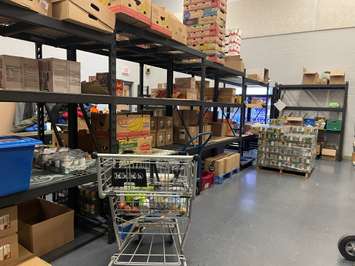A grim picture has emerged from the latest Feed Ontario report, one of increasing food insecurity and a system on the verge of failing the province's most vulnerable.
The report shows more than a million people in Ontario visited a food bank last year. The number of visits has jumped 134 per cent since 2019-2020 to 7.6-million, a new record.
"When we released record-breaking data last year, we thought that was the high-water mark," said Feed Ontario CEO Carolyn Stewart. "Food bank use has only continued to climb as more Ontarians find themselves struggling to make ends meet. When will our governments say enough is enough and take meaningful action against food insecurity and poverty?"
Once again, this year's report puts the blame squarely on a rapid spike in the cost of living. Incomes have not kept up with the rising cost of food, housing, and other necessities. It blames policy decisions like eroding social support programs, the growth of precarious work, and inadequate investment in affordable housing.
"Across the province, we are hearing reports of long lines, empty shelves, and a growing concern that some food banks may have to close their doors," added Stewart.
Sixty-nine per cent of food banks in Feed Ontario's network fear they don't have enough food to meet rising demand, and 53 per cent don't have enough funding.
Ontario is entering the final year of its Poverty Reduction Strategy, and Feed Ontario questions why poverty continues to climb. It calls on the province to develop a more robust poverty reduction strategy for the future.
Despite the challenges, Stewart continues to hope for a more food-secure Ontario.
"If we work together, we can build a better future where everyone in Ontario has access to the food they need," she said.






